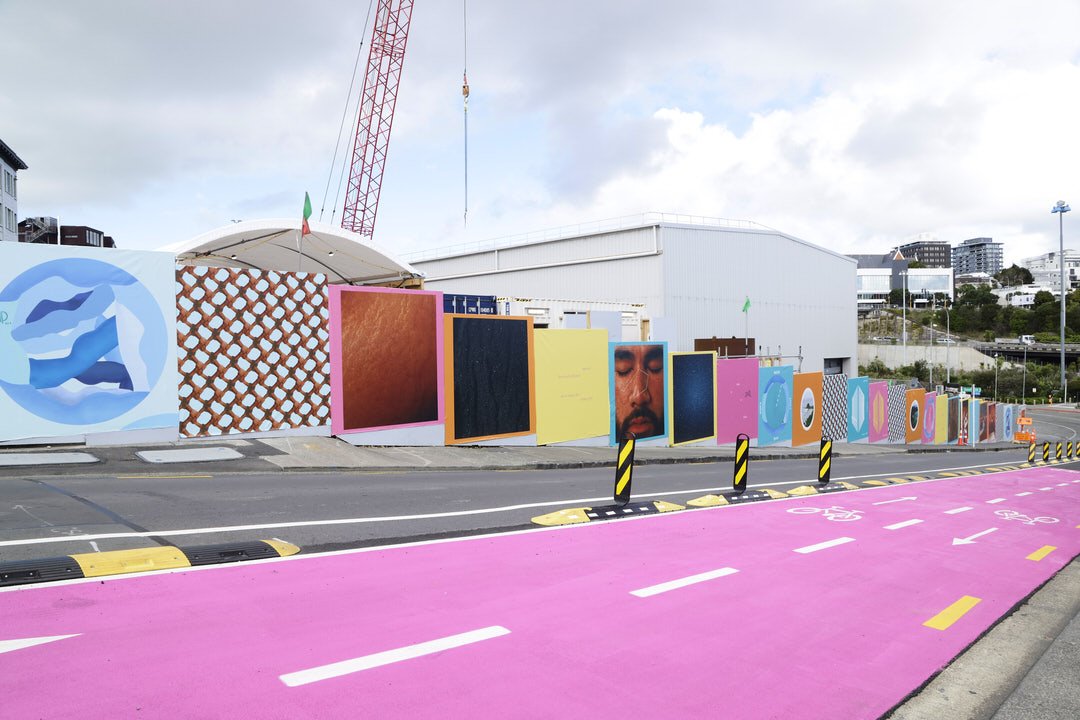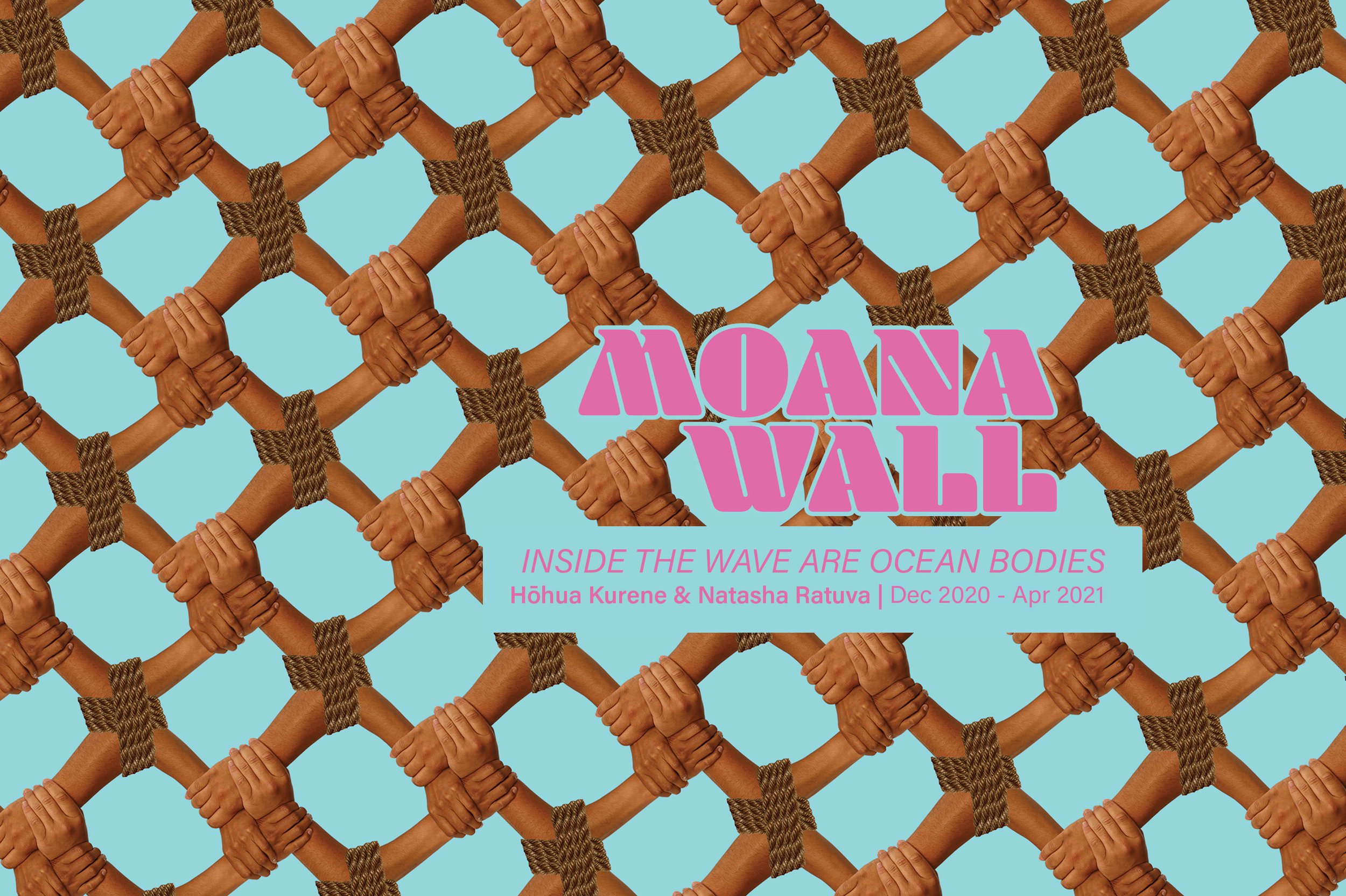
SummaryNearby to Tautai Gallery, on East St, Tāmaki Makaurau, a 70-metre-long line of hoardings was transformed into the MOANA WALL. The wall aimed to use existing infrastructure as a canvas to highlight contemporary Pasifika artists and celebrates the diverse community of Karangahape Road.
The MOANA WALL aimed to highlight a significant era of Karangahape Road’s history and its lasting connection to Pasifika communities today.
The first MOANA WALL project, curated by Cora-Allan Wickliffe, was an exploration of the crucial mechanisms that inform our connections as Moana communities. Through photographic, digital media and poetry artists Hōhua Kurene and Natasha Ratuva created a narrative that celebrates the connections of their Fiji, Samoan and Māori whakapapa.
Creating ‘Inside the waves are ocean bodies’
Witness the connection between artists Hōhua Kurene and Natasha Ratuva and how that collaboration translated into an epic 60m site-specific work ‘Inside the wave are ocean bodies’, curated by Cora-Allan Wickliffe.
Inside the waves is ocean bodies is an exploration of the crucial mechanisms that inform our connections as Moana communities. Through photographic, digital media and poetry Hōhua and Natasha created a narrative that celebrates the connections of their Fiji, Samoan and Māori whakapapa.
The bottom end of East Street follows Natasha’s lineage and the top represents Hōhua’s. The dual starting points are a journey inward that intertwine their lineages with one other and the ocean, allowing the onlooker to be pulled towards the centre of the work no matter their visual starting point.
Addressing some of the parallels that exist between ocean bodies and the form of the ocean are magnified through portraiture, captured movement and markings of Te Ao Turoa.
Speaking to this in a number of panels, the artists have used their own anatomy and in particular they have created an unforgettable fishing net made up of their own anatomy mimicking this ancient practice of making nets from their homelands.
The use of spheres and circles is a constant theme throughout the wall that speaks to the artist's understanding of space, direction, interconnectivity & community. Natasha features these circular symbols that in Fijian culture represent "veisorosorovi" or peacemaking and also referring to the collective of villages as being one entity comprised of many.
One of the strongest circular forms in the work are featured on the two "wayfinder cell” panels which feature a compass like image pointing directly to the artists homelands in Samoa and Fiji giving the viewer a moment to consider the distance and connection . These wayfinder cells also acknowledge the rich Moana history that Karangahape holds but also connects the artists as Tangata Tiriti and Tuakana to Tangata Whenua and Mana Whenua.
At the centre, audio recordings were taken of each artist’s deep inhale, likening the first inhale they take when returning home into their vanua/fanua/whenua for the first time. These recordings were accompanied by audio recordings of their home shorelines in Kadavu, Fiji and Luatuanu’u, Samoa by family members. These were then turned into audio frequencies which as a series of lines sit at the very centre of the work depicting the very breath of the artists and the sound of their ocean homes.
As you walk along the wall we invite you to be engulfed by the journey of two young Moana artists who have drawn upon their own lived experiences to bring you their vision of what it feels like to be ocean bodies inside a wave.
By Cora-Allan Wickliff

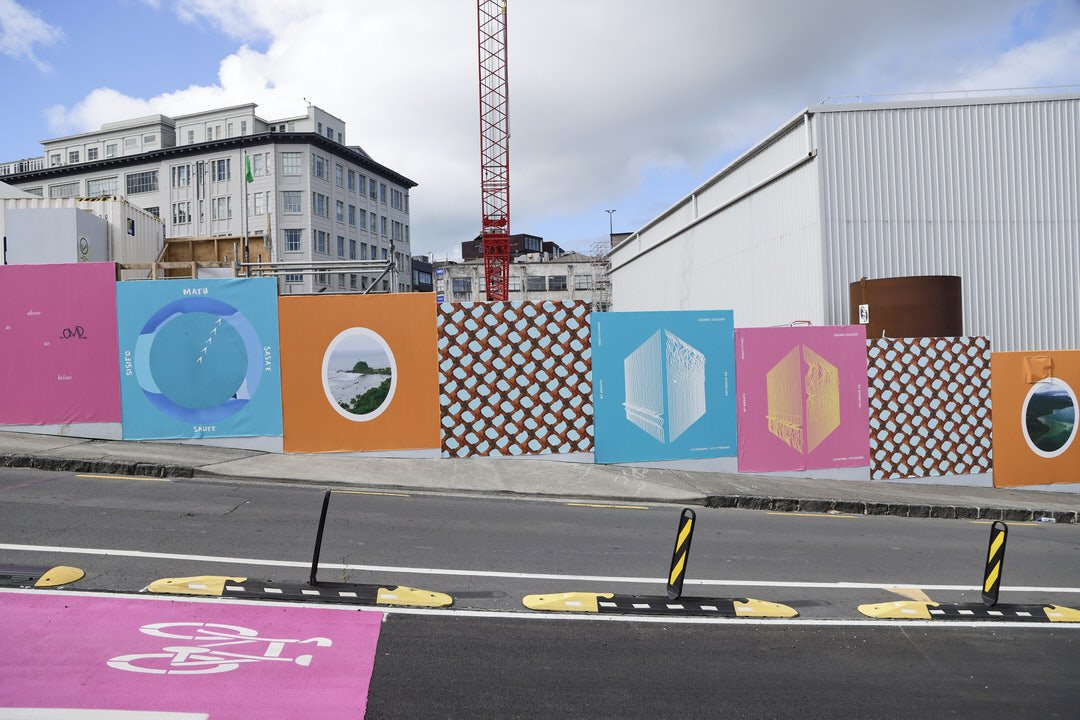
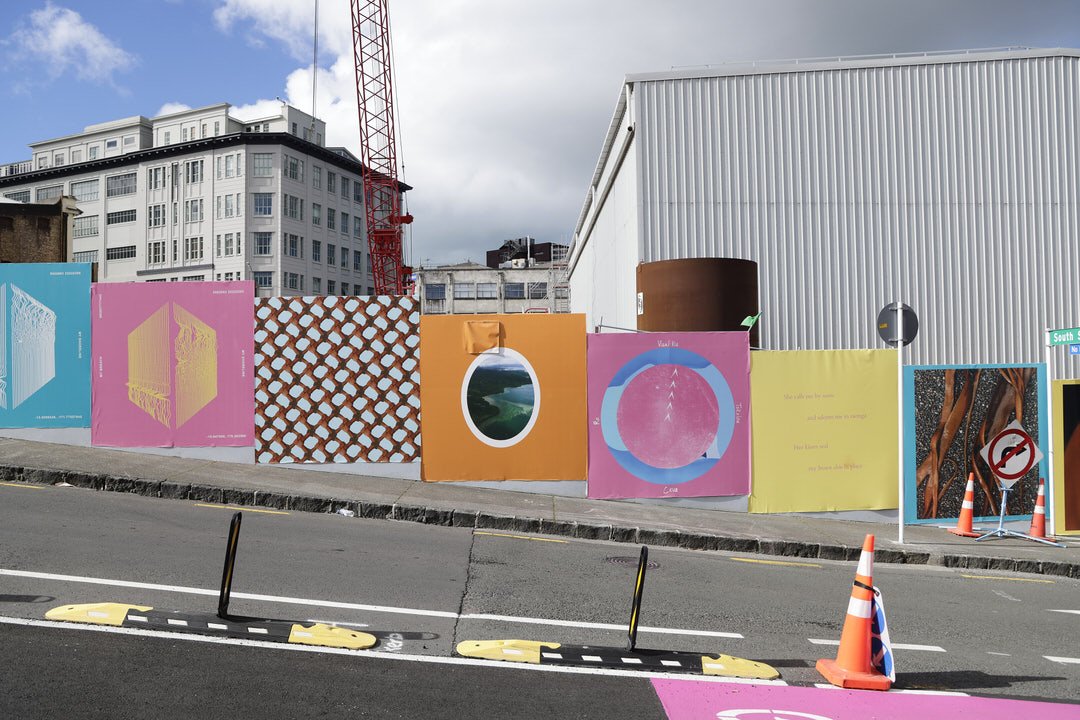
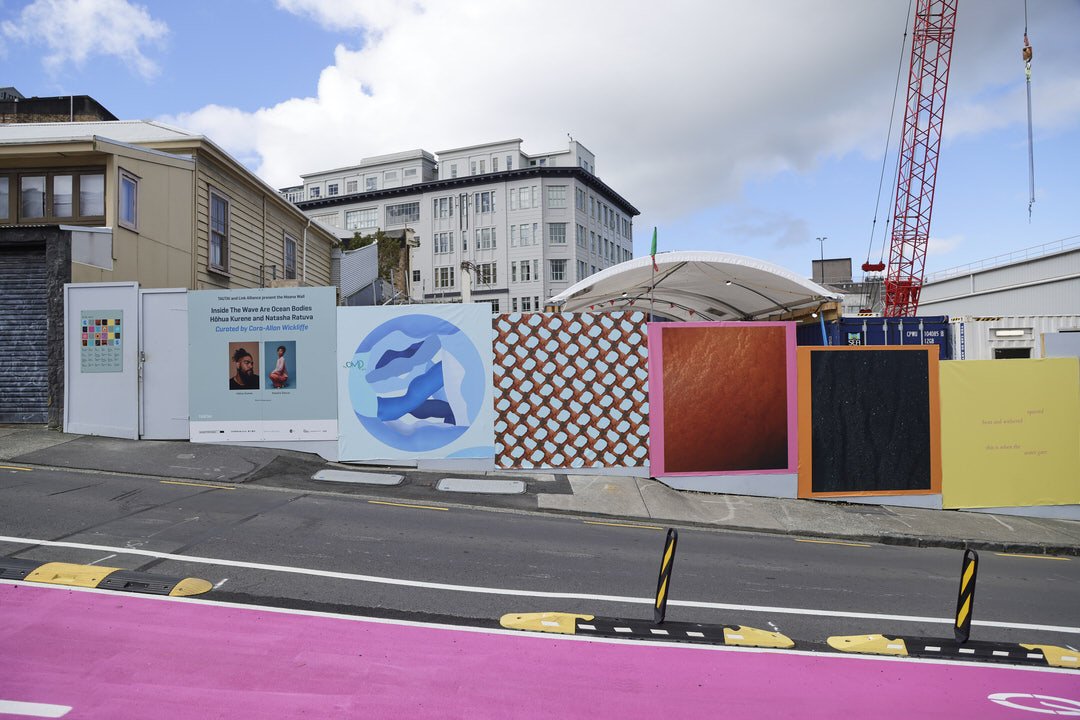
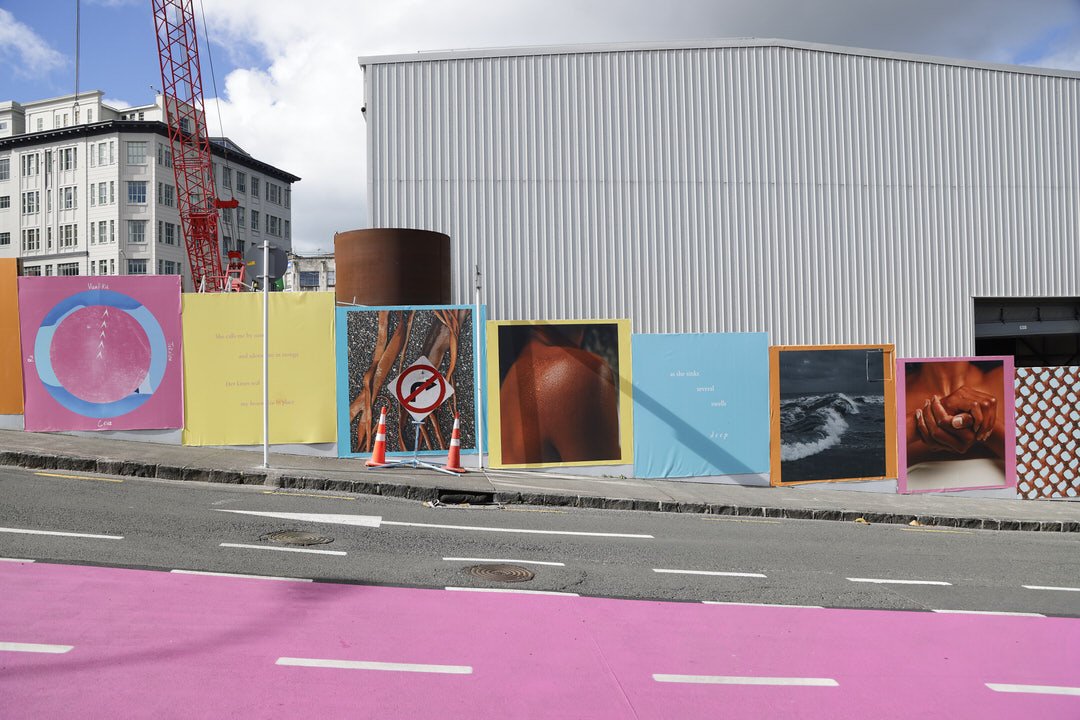
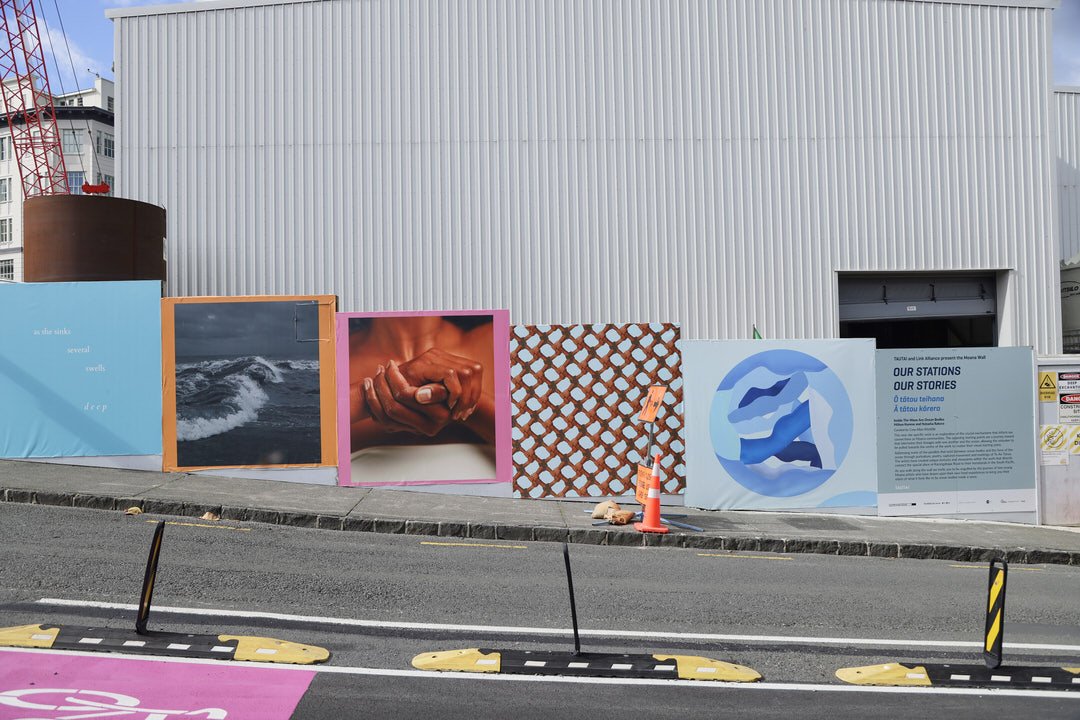

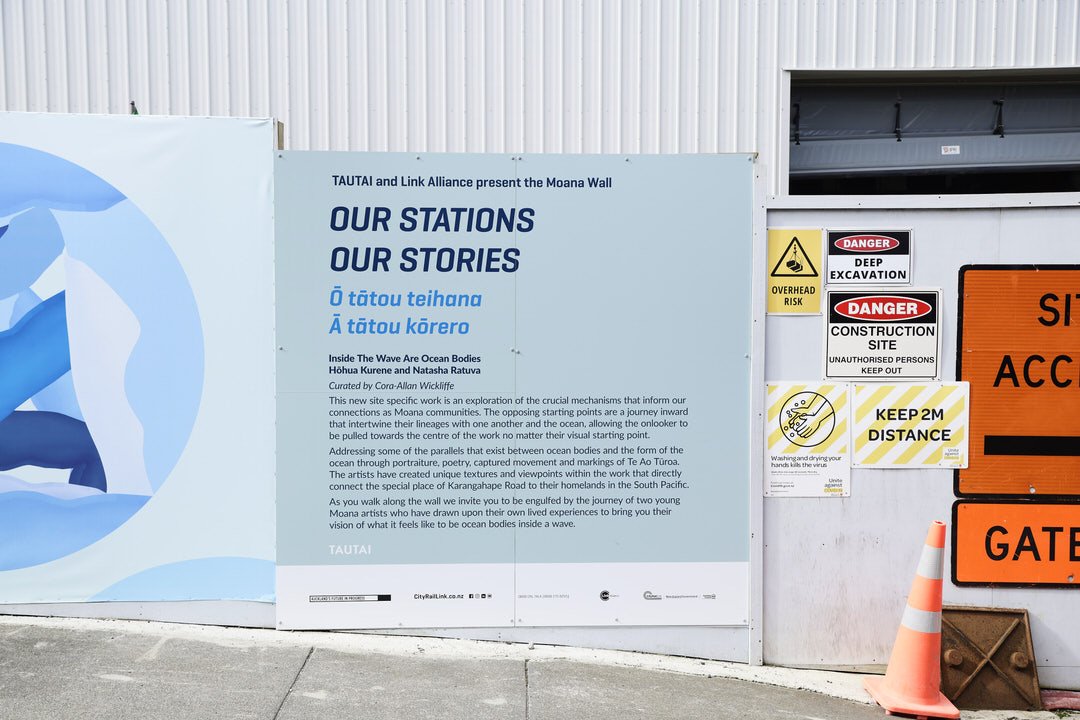
Meet the Artists

